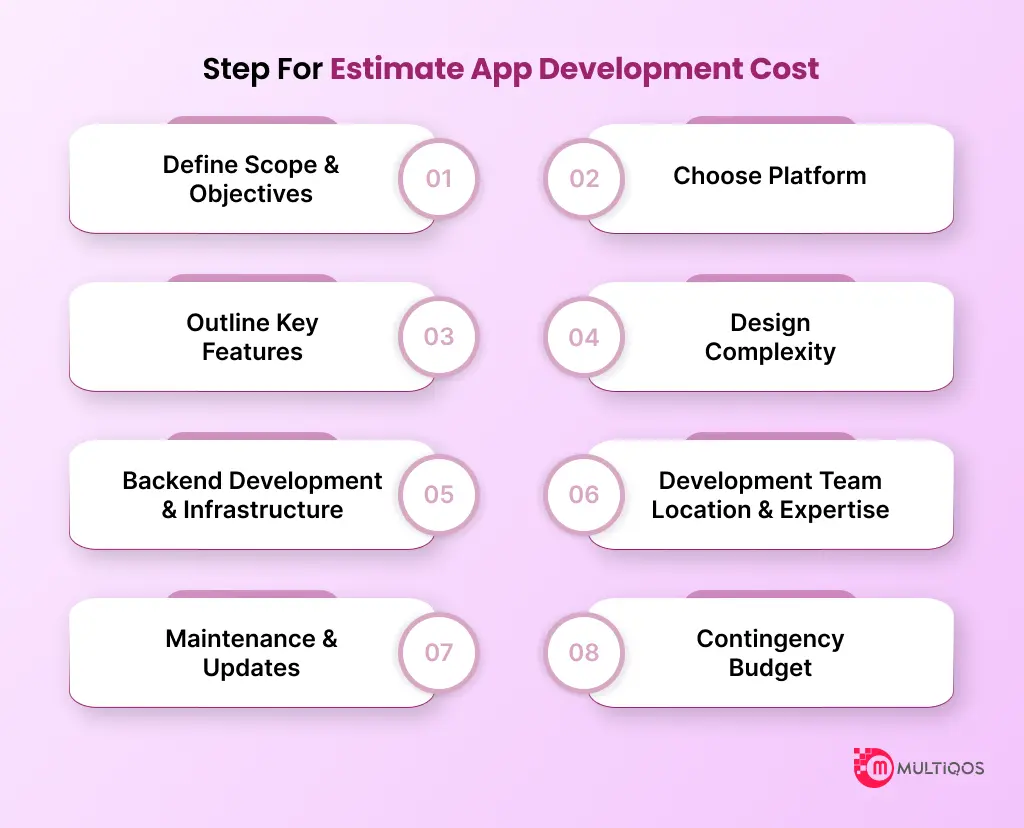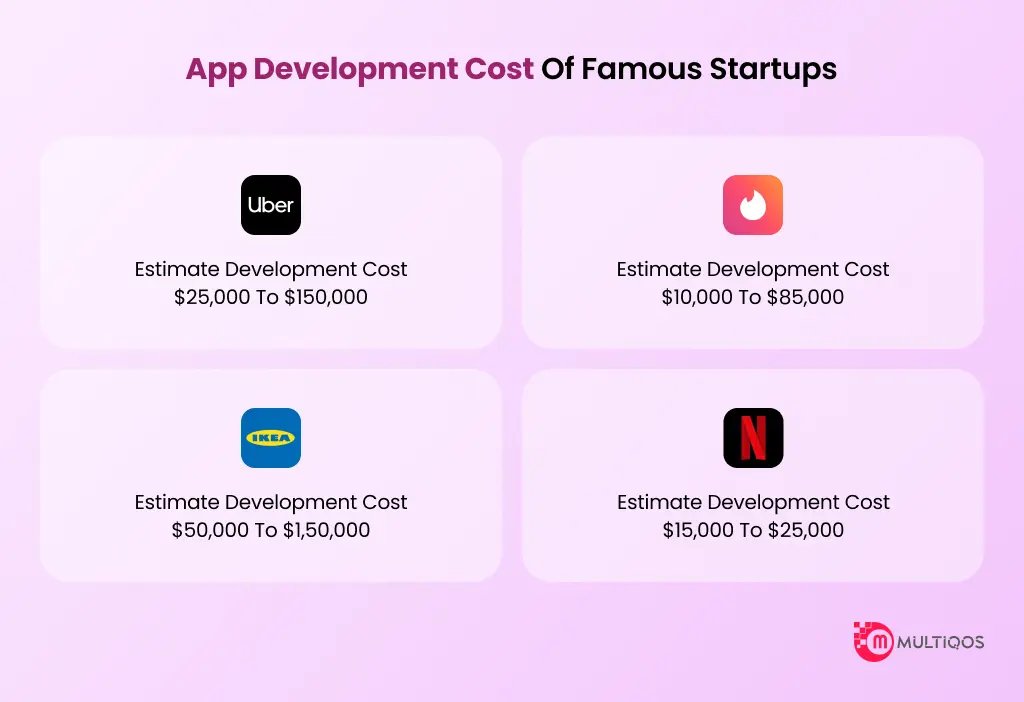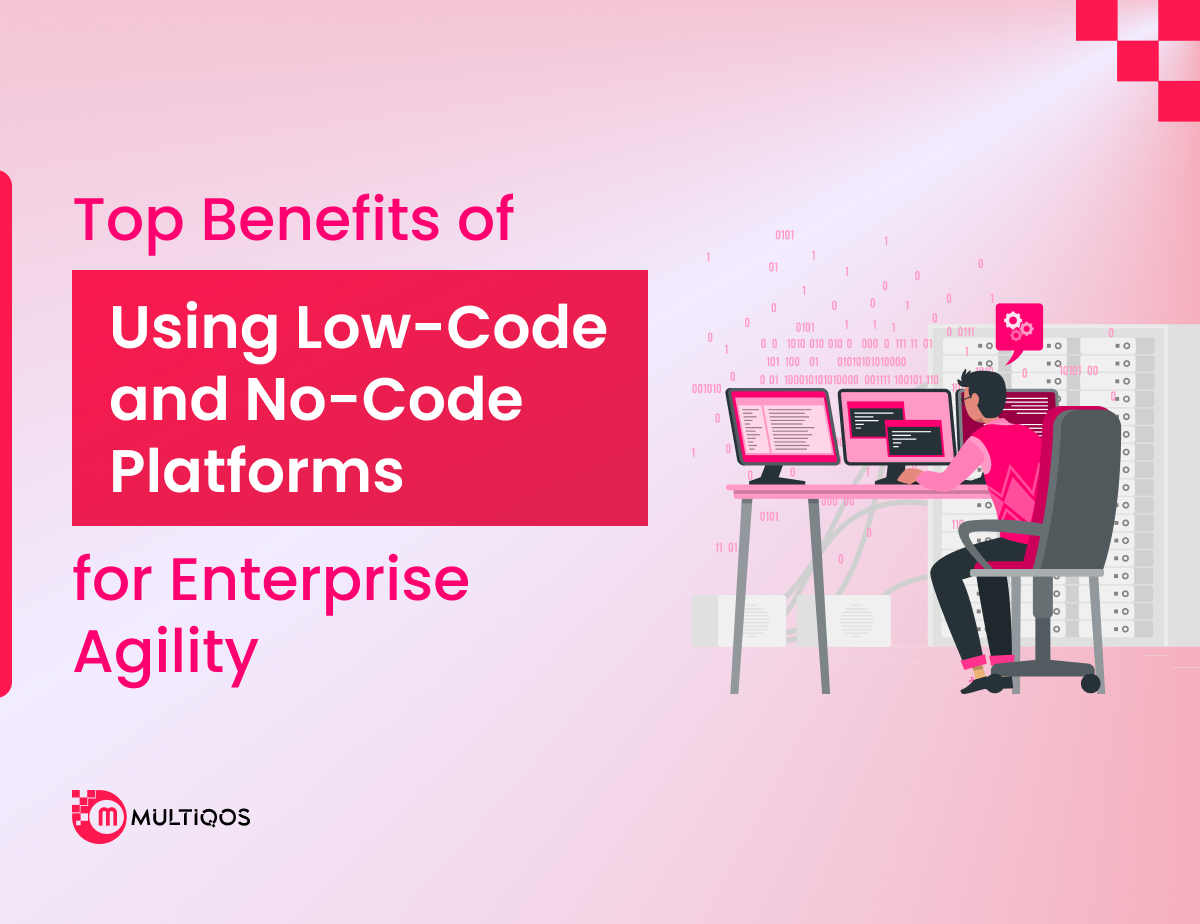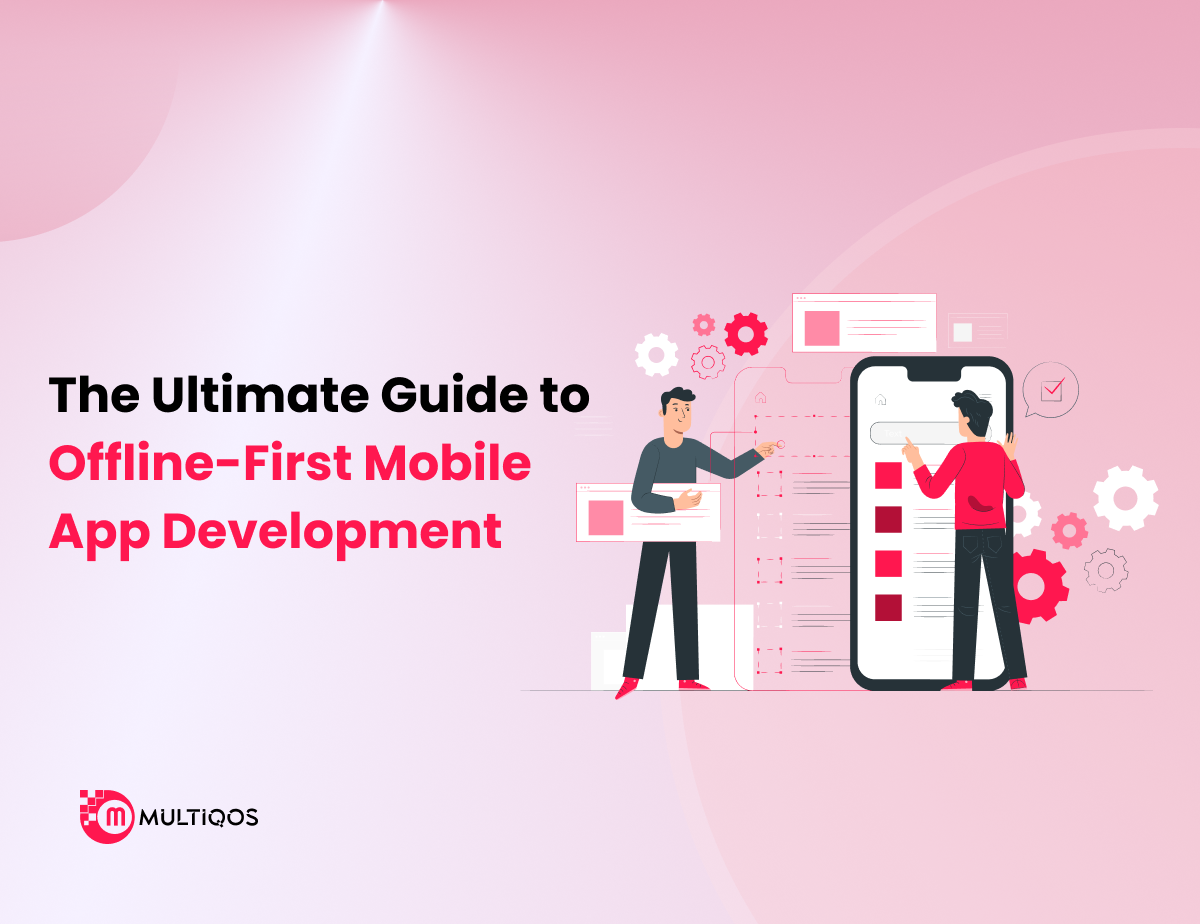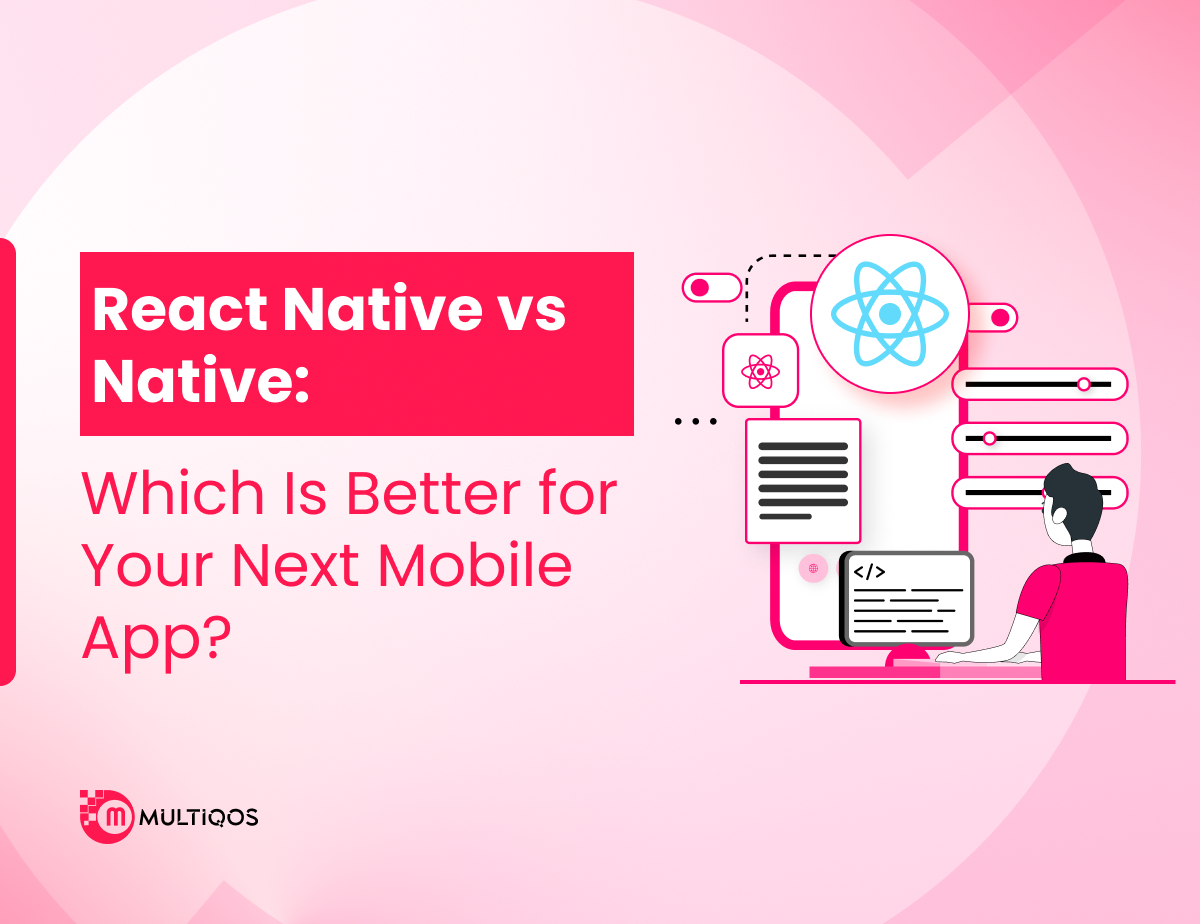How Much Does it Cost to Develop an App in 2025? A Detailed Guide
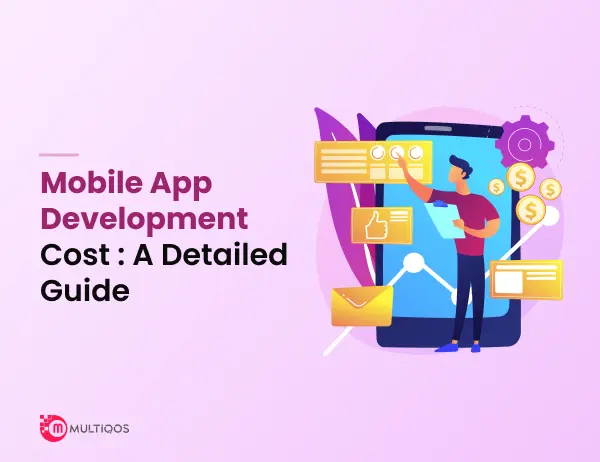
The development of mobile applications has changed noticeably and has become an essential tool for business development and innovation. When progressing through 2025 it is important for any business that is planning to enter the mobile application market to know the cost aspect of having an app.
In this guide, you’ll find an overview of app development costs, factors affecting them, and ways to manage your budget more effectively.
Mobile App Development Market: An Overview
Mobile app development industry is still growing, currently with revenue estimated to be $935 billion in 2023.
Businesses are spending heavily on the development of new applications that can cater with the high demand for applications that are both new and easy to use. This shows that the market is not stagnant because there is change in technology, the nature of consumers, and emerging platforms.
App Development Cost Breakdown
Keeping in mind the various cost factors of app development is imperative to have appropriate cost estimates.
Key factors include:
- Development Team: A good example of cost influence is where your development team is located and their experience level. A team in North America can be hired for $100-$200 an hour while hiring a team from Eastern Europe or India can be as cheap as $20-$50 an hour.
- App Complexity: The simple applications are developed within $7000 to $20000, mid-complexity applications in the range of $20000-$50000, and highly complex applications that can go above $100000.
- Platforms: Choices of Android, iOS, or both in development can influence costs. Dedicated mobile development tools like React Native or Flutter are good to go for cost-efficient approaches.
How Much Does It Cost to Develop an App Based on Development Stages?
The process of building a mobile application is quite complex and can be divided into several stages. All these phases involve some or the other skill and necessary material that adds on the total cost of the project.
If you are able to analyze cost across development stages it would be easier for you to set and follow budget so that resources are utilized as planned throughout the development process.
Now let us take a look at the costs that are entailed with each phase of the App development process.
1. Planning and Research Stage
The first stage in the process of creating an application is the planning and research phase. In this phase, you define the goal, audience, features, and objectives of the app. The primary function of market research is performed to identify the users’ needs and assess competitors.
This stage typically involves the following activities:
- Requirement Gathering: Consultations with clients to identify all the requirements needed for the project.
- Market Analysis: Conduct market analysis and collect information concerning customers’ needs.
- Feasibility Study: App functionality can be tested to check if the app can be delivered within the provided limitations.
The planning and research stage for the project can cost from $5,000 to $15,000 or about 10-15% of the total project cost. The actual cost can vary depending on the nature of the application and the study conducted to achieve the desired result.
2. Design Stage
Development phase involves creating the layout and functionality of the app from a visual point of view. This phase is very important so that the user experience (UX) and the look-and-feel of a system or application, the so-called user interface (UI), is as effective as possible.
The design stage involves:
- Wireframing: Developing wireframes which would serve as the foundation to design the framework and navigation of the application.
- Prototyping: Creating dynamic simulation models for the purpose of depicting the process and activities of the users.
- UI/UX Design: Creating a variety of screens, icons, and user interactions that make the experience fun.
In fact, design is a very important aspect that can have a major impact on user retention and satisfaction. Expense costs in this stage are estimated at $10,000 – $50,000 / 15-25% of the overall project expenses. It is crucial for apps to look professional in order to be relevant on the market, and hire UI UX designers can help achieve this.
3. Development Stage
This stage is where the working of the actual app is done, including the coding and implementation of the application. This phase can also be the most costly and take extensive time to complete than the other phases of the software development life cycle.
It involves:
- Frontend Development: Implementing the code within the client-side interfaces that are used by the end-user.
- Backend Development: Developing the server-based environment that would host application functionalities.
- API Integration: Integrational of the app with other services and platforms.
- Database Management: Creating and designing databases in order to store and access information.
The development stage could price between $20,000 to $200,000 depending on the sort and complexity of the app. This phase normally encompasses between 40 – 60 % of the total cost of the project. The cost will naturally be higher for developed applications that consist of several features and functions.
4. Testing and Quality Assurance (QA) Stage
The testing and quality assurance are important steps, which should be conducted to be sure that the app works finely and corresponds to the user’s expectations.
This stage involves:
- Unit Testing: Combining the part to ensure that each plays its rightful role within the entire system.
- Integration Testing: Coordination and integration of different modules in order to make sure they are compatible.
- User Acceptance Feedback from the end-users aimed at pinpointing the problems that require a solution.
- Bug Fixing: Debugging which involves addressing problems and issues that were found when testing the software.
This approach will help in assuring the quality of the app so as to have a reliable and quality app. The cost of this stage is between $5000 and $30,000 or 10-15% of the total amount of money that will be spent for the project. It is important to pay much attention to testing as this will help one avoid costly rectifications after the product release and make users happy.
5. Deployment and Launch Stage
The deployment and launch stage is the last stage where the app is commissioned and made available to users.
This stage includes:
- App Store Submission: Taking the built app to the various reviewing bodies of app stores such as Google Play and the Apple App Store to have it reviewed and included in their online repositories.
- Beta Launch: The last step of the testing process, when a special preliminary or trial version of the product is delivered to a specified group of users.
- Marketing and Promotion: To market or in this case to spread the word to increase the downloads of the app.
The price range of this stage can range from $2,000 to $10,000 depending on the marketing and promotional techniques used. This stage normally accounts for about 5%-10 % of the total project cost.
6. Maintenance and Updates Stage
Once the app is developed, constant development and modifications are needed to ensure its functionality and relevance in the market.
This involves:
- Bug Fixes and Improvements: Fixing any bugs or challenges that may occur after implementing the change.
- Feature Enhancements: Modifying the application by including new features and enhancing existing ones based on users’ feedback.
- Performance Monitoring: Ad-hoc approach – periodically checking how an app works and making corrections if needed.
It costs anywhere between $10,000 and $50,000 per year to maintain and perform upgrades for the app, depending on the app and how frequently upgrades are done. Annually this stage costs between $15-20% of the overall project cost.
App Development Cost Based on Its Type or Platform
There are major factors that define the cost of applications and they include the type of application and the platform that the app is to be developed for.
Here’s an in-depth look at how these factors influence costs.
Cost by Platform
The type of platform whether Android, iOS, or Hybrid also determines the cost of developing the selected application.
- Android: Android development relies on languages such as Kotlin or Java to create applications. This usually costs between $65,000 and $800,000, depending on numerous factors, such as the complexity and functionalities of the app. Android has a large number of users and supports a wide range of devices which contributes to developing complex and expensive applications.
- iOS: iOS applications are created with Swift or Objective C and may cost from $70,000 to $1,000,000. The higher costs are partly attributed to Apple setting high standards for quality and design requirements to maintain a consistent experience across all devices built on the iOS operating system.
- Hybrid: Hybrid apps for both Android and iOS using the same code can range from $90,000 to $5,000,000. Popular hybrid development frameworks include React Native and Flutter. Hybrid apps are cheaper since it does not require to develop two applications at the same cost for the two different operating systems; however, the hybrid apps may not perform or may not be as pleasing to the eyes as the native apps.
Cost by Application Type
Various applications are used for different purposes, and have different capabilities and issues that impact the cost of their development.
- Travel Apps: They may have features such as maps, tracking services, booking and appointment options, and user feedback. The cost of launching a full-scale travel app Development can cost from $ 100,000 to $ 300,000. Some examples are Google maps and AirBnB, normally, they offer lots of options to improve the experience.
- eCommerce Apps: As with many web applications, the back-end functionality of eCommerce solutions must be strong to support the elements of product offering, customer access, payment, and security. The cost to build an eCommerce application ranges between $30,000 and $250,000, with Shopify and Amazon Seller apps as an indication.
- Social Media Apps: Social media app Development have a very active user-interaction and most of them include real-time update options, option to share multimedia, and are very active. The cost estimates of social media apps fall between $35,000 and $400,000, and the included famous apps are Instagram and Facebook.
- Healthcare and Fitness Apps: To be used in healthcare, these apps have to be safe and be able to meet industry norms such as HIPAA. They range over the functions like health monitoring, telemedicine, and compatibility with smart gadgets. The cost ranges from $20,000 through $100,000 with popular apps such as Fitbit and Samsung Health.
- Productivity Apps: Many apps that are made with the intention of increasing productivity feature features such as task lists, calendar synchronization and collaboration options. Creating these applications can cost anywhere from $20,000 to $90,000 depending on the nature of the application. Some examples include Evernote and Google Calendar.
- On-Demand Apps: Some examples of the on-demand applications are Uber, Postmates, etc., which need some functionalities like the tracking system, payment gateway and user profile, etc. The cost of developing these apps vary between $35,000 to $100,000.
How to Estimate App Development Cost?
Calculating the cost of an application is quite complex as it involves a number of factors and phases that need to be addressed while developing the app.
Here’s a step-by-step guide to help you navigate through the estimation process effectively:
1. Define the Scope and Objectives
The process should start with a thorough description of the application’s mission, its audience and the principal features. Categorize between a small app with basic features or a large app with extra capabilities and features. This is the first element that allows for the formulation of a precise cost estimate by outlining the key objectives and needs of the project.
2. Choose the Platform
Choose whether you want iOS app development only or Android only or both. The platform selection influences the costs directly because each platform contains design standards, tools, and exposure. In addition, it is crucial to determine whether using a hybrid approach through frameworks like React Native or Flutter would be more cost-efficient for the project.
3. Outline Key Features
Write down all the components that are to be included in your app. Divide them into basic and-plus functions. This prioritization assists in identifying what ought to be implemented first since it’s important and what can be implemented later on. Functions like user login, payment acceptance, location identification, social account linking may have a significant impact on the price.
4. Design Complexity
Think about how intricate the app is. Functionality of design is important to make users interact with the sites but fancy designs, animations and graphics make the development costly. To develop a wireframe and prototype for your project, consult a proficient UI/UX designer that you can afford.
5. Backend Development and Infrastructure
Consider the backend factors such as setting up of servers, databases and the APIs to be used. The more complex the backend is, the higher is the price, especially in case the backend has to perform real-time data processing, user management, or third-party integrations. Choosing the large-scale cloud services can be a good approach to consider cost-efficient measures in the back-end.
6. Development Team Location and Expertise
A major factor that affects cost estimation is the geographical location and experience of the development team. Development rates differ significantly depending on the region, and countries such as India can offer better rates as compared to the USA or western Europe. Make sure that the skills and experience of the team are adequate to provide a good product consistent with your budget.
7. Maintenance and Updates
It is important that you consider regular maintenance and possible future updates as part of the total cost. Maintenance is necessary for the fixing of problems, the introduction of new features, and making the app compatible with the new OS version. Invest in maintenance, which is a percentage of your budget to make sure your app runs smoothly and is frequently updated.
8. Contingency Budget
The last one is the contingency budget that will help to cover any extra costs or features which are not considered at the beginning of the development but can be needed at any stage of work. That is why it is necessary to add a 10-20% buffer to the cost estimate to have more opportunities to adjust the project and not to worsen its quality.
Hidden Costs of Developing an App
In addition to the design, coding, and initial implementation of the app, there are many other costs that can greatly influence the total expense. These are important to consider given that they are potential sources of what is referred to as the hidden costs apart from budgets.
1. App Maintenance and Updates
When your application is live, it needs constant updates to keep it functioning properly and to address emerging OS releases. The stabilization, bugs, and performance updates are critical to maintaining user satisfaction. Such updates may also incorporate feedback from users along with adding new features, and can add 15%-20% to your annual development budget.
2. Server and Hosting Fees
Managing an app especially that which deals with loads of information and real-time operations requires stable servers. These costs can grow as your audiences increase. Online platforms of cloud services such as AWS or Google Cloud are also scalable; however, they have on-going monthly charges which are often expensive as per usage.
3. Third-Party Services and APIs
A lot of contemporary applications use third-party services for handling payments, geolocation or for allowing users to sign in using their social accounts. These integrations can improve product capabilities, but it is worth mentioning that such integrations may be paid or have per-use prices. It is, therefore, crucial to assess and allocate funds towards these costs.
4. Marketing and User Acquisition
Creating an app is not a big deal, but getting it popular is a big task, for this a proper marketing plan is needed. Digital marketing campaign expenses which inclusive of social media advertisement, app store optimization and working with key opinion leaders also has its own expense implication.
Digital marketing services are often a major expense because marketing can cost as much or even more than the product development.
5. Compliance and Security
Another crucial step is to make sure your app adheres to data protection laws such as GDPR or CCPA. Ensuring user data is secured inevitably incurs extra expenses through added security features. Software updating, security reviews, encryption tools, and compliance licenses are standard costs but frequently underestimated.
6. Customer Support
Ensuring quality customer support is another factor that may help in maintaining the users and making them happy. This can range from introducing a support team, using chatbot services, or applying the customer relationship management system. The costs associated with ensuring that your support program is effective can be relatively high.
7. App Store Fees
The Apple App Store and Google Play Store require you to pay for hosting your own app to do so. In addition to the one-time setup fee, both services charge a percentage of your app’s earnings, often 15-30%. These costs can significantly affect your margin return, particularly for apps that offer in-app purchases or rely on subscriptions.
8. Testing and Quality Assurance
Testing should be carried out effectively in order to know whether your app will work effectively in the different devices and operating systems. This also includes quality assurance testing not only at the early stage, but also at the time of bug generation through updates or new functionality. Comprehensive testing may be expensive, but it can be helpful to prevent a decrease in the site’s quality for users.
How to Reduce the App Development Cost?
Cutting down on the costs of app development while preserving quality is one of the most crucial challenges organizations face.
Here are several strategies to achieve this balance:
1. Define a Clear Project Scope
The best way of lowering development costs it to set a clear project scope of what is to be developed. Before beginning the development of your app, define its purpose, viewers, characteristics, and the services it will offer.
A clear scope eliminates risks of scope creep, situations where new features, changes accompany added costs and time. Development of versions or releases that include only the most basic set of features for the application or software.
2. Adopt Agile Development Methodologies
There is evidence that utilization of agile development methods offers a chance to reduce costs as it implies iteration. This approach enables the developers to run tests limitlessly and receive feedback and enhance the system concurrently. These have the effect of surfacing problems early so a great deal of rework is not required and any solution created meets the need of the user satisfactorily.
3. Leverage Open Source Technologies
Open source technology and libraries help in cutting down the development time and expenses. There are ready open source system and service components that can be reused in your app rather than making a new one. This approach is efficient and also makes use of people’s knowledge in open source systems.
4. Opt for Cross-Platform Development
Creating a hybrid application perfect for React Native or Flutter will let you have one set of code for both Android and iOS. This means that there is no need to build two versions of an app and that will help reduce the costs associated with dual mode apps. Cross-platform apps are highly performant and close to native, and they present good value propositions for many firms.
Read Also: Native vs. Cross-Platform Development
5. Release a Minimum Viable Product (MVP)
A good way to avoid this is by developing the product from scratch in stages, which often begin with an MVP. An MVP has in it features that are basic enough to solve your app’s core problem and the user’s primary issues. The release of the MVP keeps customers engaged and provides the opportunity to capture the market and fine-tune subsequent iterations.
This iterative process also makes it possible to avoid expensive premature directions in product development and invest in the functions that people find valuable.
6. Utilize Reusable Components
Reusable components and modules can help to improve development time. Thus, by creating pieces that can be shared across portions of your app or in other projects, you can optimize time and costs. This practice helps check overboard a number of ways and corrects mistakes that would be detrimental to development.
7. Employ Cloud Services
In terms of back-end processes, storage, servers, etc., embracing cloud services can prove to be very cost-effective. AWS, Google Cloud, and Microsoft Azure are examples of cloud platforms that solve this problem by providing shareable solutions that gradually scale up as the number of users increases, thus minimizing expenditures on application infrastructure.
8. Use Pre-Designed Templates
Pre-designed templates for UI UX design can indeed help to save development time and money and are recommended for application. Templates allow for a standardization of design while still providing flexibility for brand and app customization. It also takes less time than having to draw something from scratch and is good enough to give that professional look.
App Development Cost of Renowned Startups
The nature of development costs of apps developed by popular startups has the potential to provide a number of insights concerning budgeting of similar applications.
1. Uber
To create an app like Uber, one has to consider the application’s features that include real-time GPSnavigator, payment system, user registration, and history of previous rides. As a result, the costs for creating these pieces can go from $25,000 to $150,000, mainly because of the sophistication needed.
Uber has invested a lot of resources in the backend and the interface thereby achieving exponential growth. Therefore, it is evident that Uber generated an annual revenue of $35 billion. According to a monthly and year-to-date average, it reached 95 billion for the twelve months ended September 30 2023.
2. Tinder
Tinder was among the first successful dating apps that offered users an easy-to-master swipe-based mechanism. Creating a similar app also requires relevant elements such as profiles of users, inter-user messaging, geolocation integration, and highly effective algorithms for searches.
In general, establishing a similar app should cost between $10,000 and $85,000. With millions of users all over the world, Tinder has become a financial success as well – in the first quarter of 2023, the company’s revenue comprised $441 million.
3. Ikea
Apart from the virtual store, Ikea has an augmented reality application where one can place the furniture and see if it fits into their house. Creating an app with augmented reality, 3D modeling, linked to the CRM system, and having several analytical dashboards will cost $50,000 to $150,000 in total.
This is why the investment in technology has not only improved the customer experience but also further established Ikea as a cutting-edge retail company.
4. Netflix
Building a streaming service similar to Netflix implies the necessity of developing effective content management, video delivery, user profiles, and subscription services.
The development of such an app can cost anything from $15,000 to $25,000. Over the years, Netflix has positioned itself as an unyielding platform with millions of subscribers across the world, enabling and propelling its revenue model through content streams.
Average Cost to Develop an App
The cost of developing an application depends on various factors including the level of complexity and the unique features intended in the project for both Android app development and/or iOS.
In 2025, a simple application that may have fundamental features and limited user interface whereby the application requires 1 to 3 months to be developed for a simple application will cost between $7000 and $20000. Such applications usually apply to a particular need and provide standard solution approaches that help to save both money and time.
For a simple app with these extra features, which may also include the ability to enable users to sign up, store data, and, to certain extent, integrate with APIs, depths range from $20,000 and $50,000. This kind of app development typically takes between 3 to 6 months and calls for more complex design and development to accommodate the improved functional attributes.
On the other hand, complex applications that have features like real-time data processing, complex UI/ UX design, advanced security and compatibility with different platforms can cost from $50,000 to $100,000. The aim of these projects is more general and these are more time consuming and usually take between six months and one year.
Finally, custom applications that are developed to solve unique business requirements with very specific solutions including unique features and integrations cost an estimated $100,000 and above. Such apps are usually designed in different phases and they can take more than a year to be fully developed.
These cost estimates assist in app expense planning and budgeting for the application development successfully.
How MultiQoS Can Help You Optimize the Cost of App Development?
As one of the top mobile app development companies, MultiQoS offers services adapted to your requirements. We are experienced in managing resources and provide the best results possible with minimal development costs. We work with a team of experienced developers partnered by the customer-oriented approach to provide the best applications within your budget.
Conclusion
Costs of app development in 2025 are influenced by various factors including the app’s complexity, stage of development, and the existence of hidden costs that are likely to come up. Thus, by analyzing these elements and utilizing the ways of minimizing costs, companies can improve their budgets and have successful app launches.
Selecting an experienced software development partner such as MultiQoS guarantees the organization affordable and efficient solutions desired.
FAQ on Mobile App Development Cost in 2025
Our company focuses on providing deep and complicated solutions, including real-time data processing, high-level UI/UX interactions, security and multi-platform compatibility. Most of these cost from $50,000 to $100, 000 and take between 6 and 12 months depending on the specifications.
Indeed, MultiQos offers exceptional custom app development services especially in project settings. Our prices start from $100,000 and allow your business to receive highly individualized service. These developments are typically not one-off projects and are continually worked on, with it often taking over 12 months to complete. In terms of project delivery, we often interact with the clients in order to achieve a product that fits their needs and objectives.
Get In Touch


